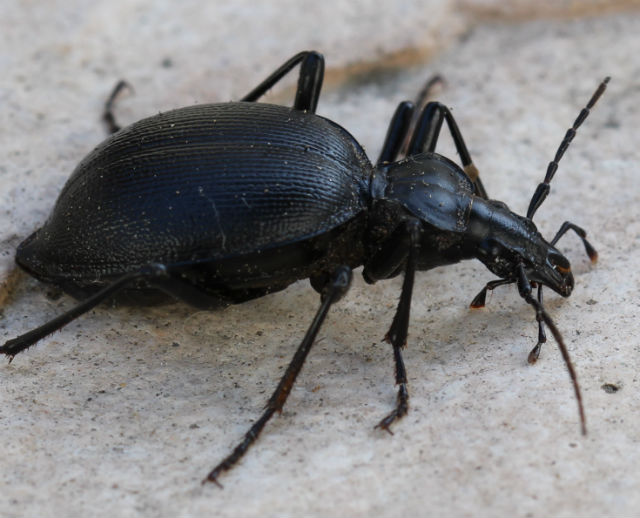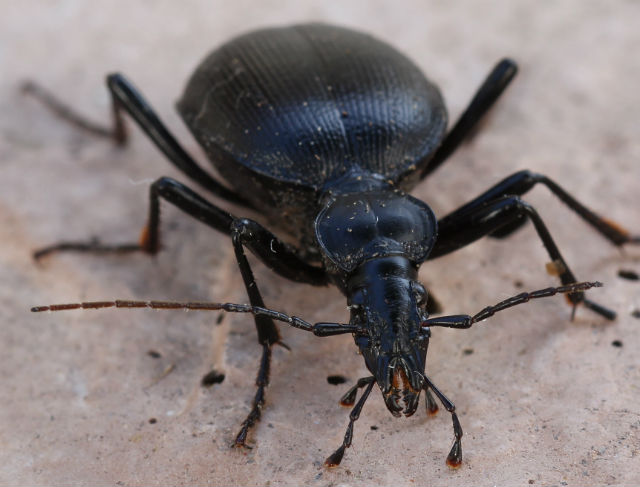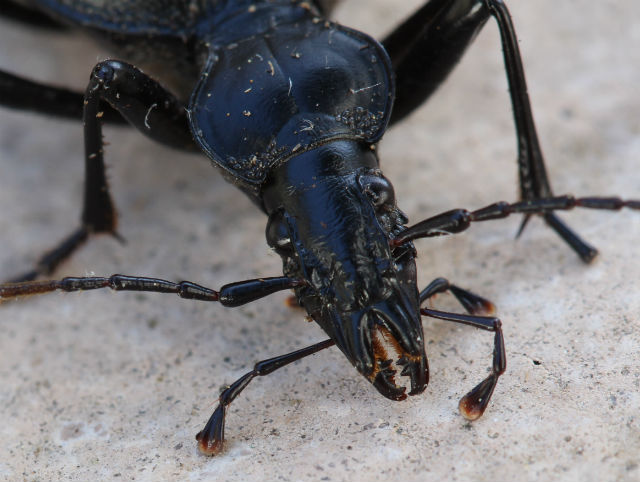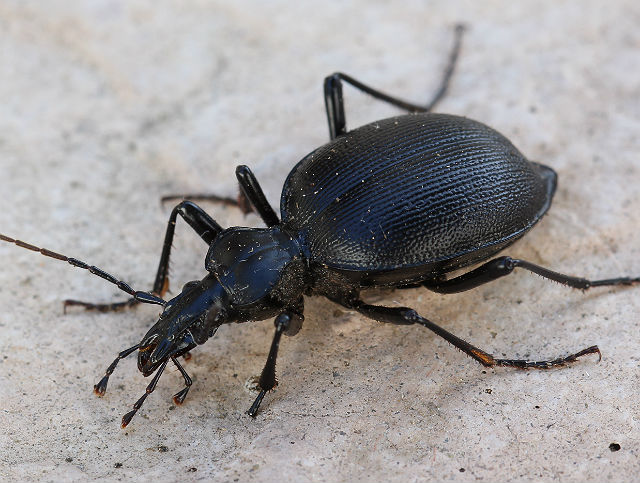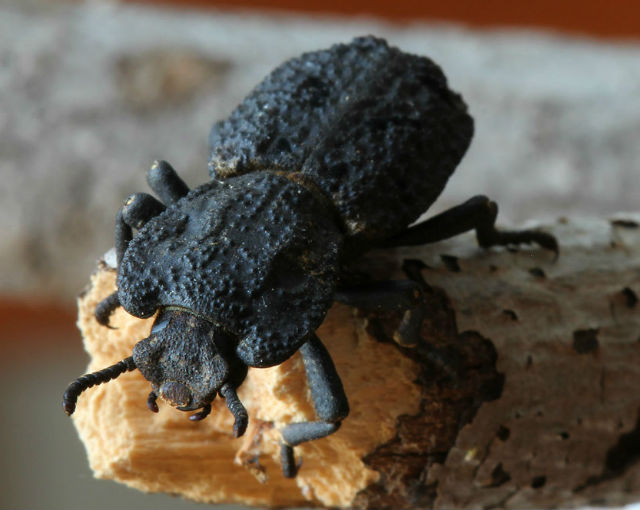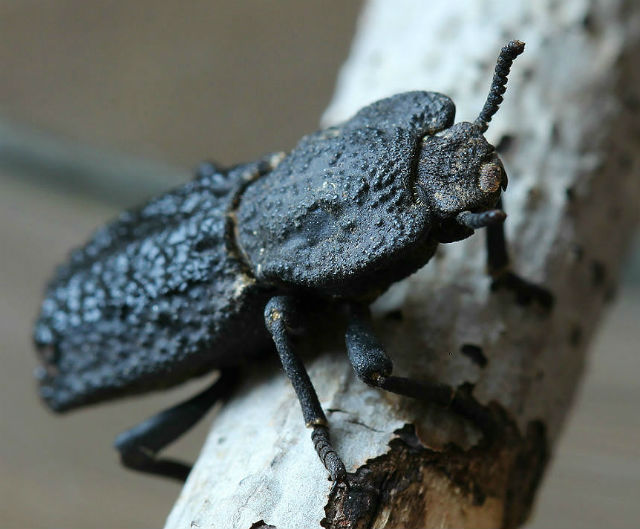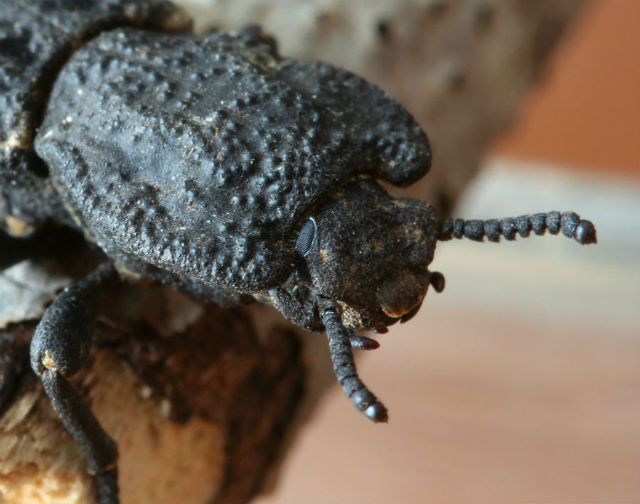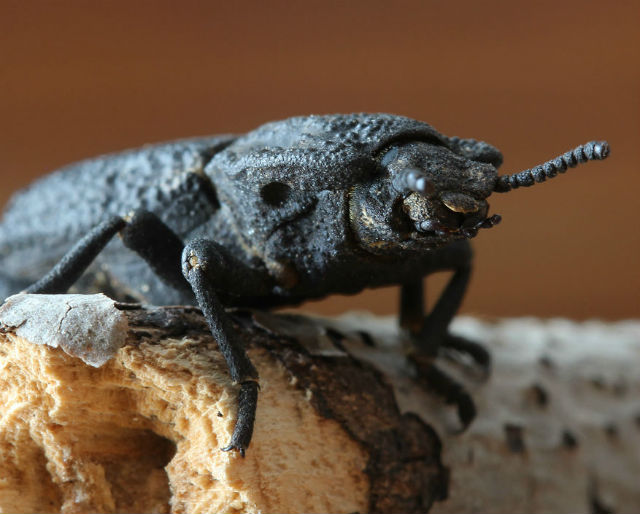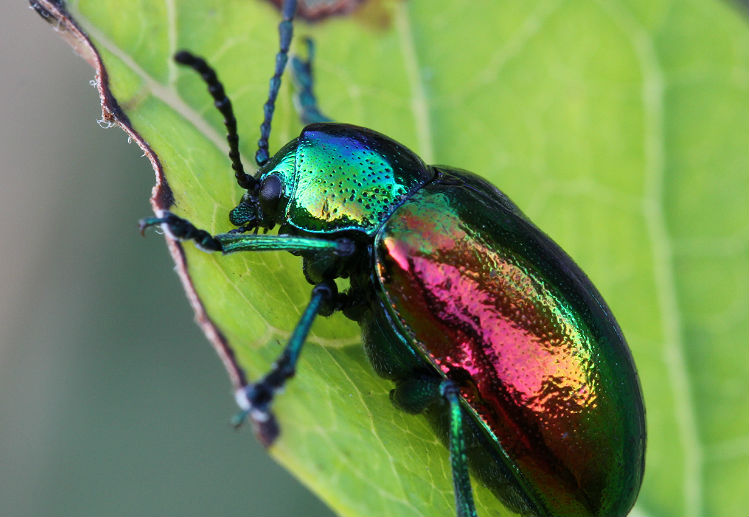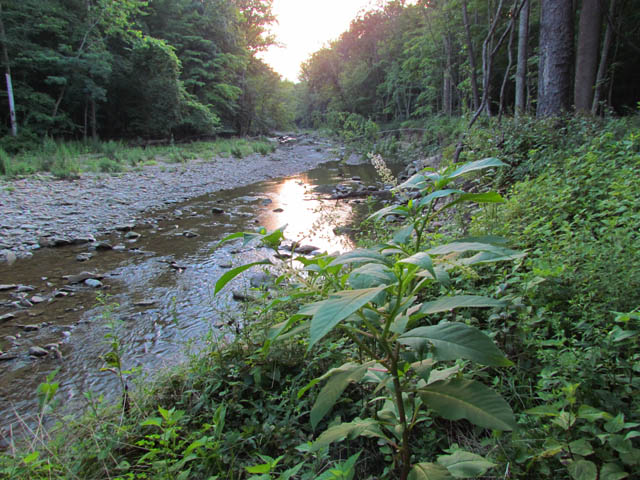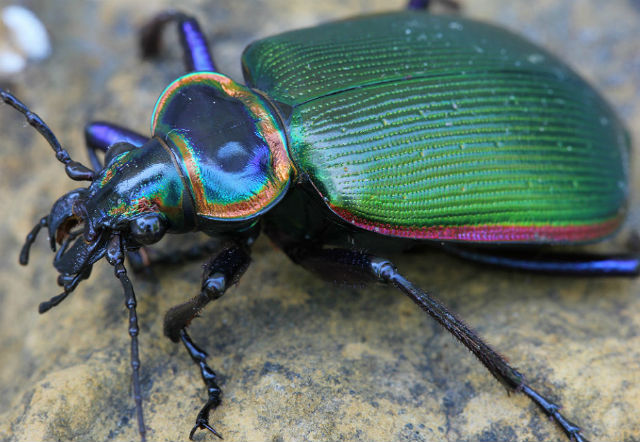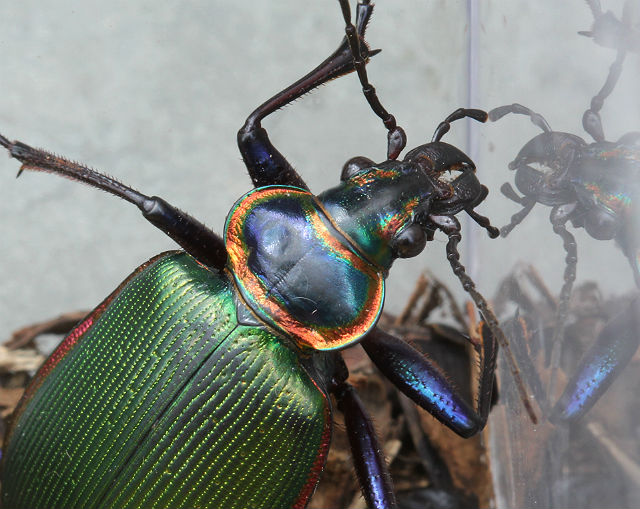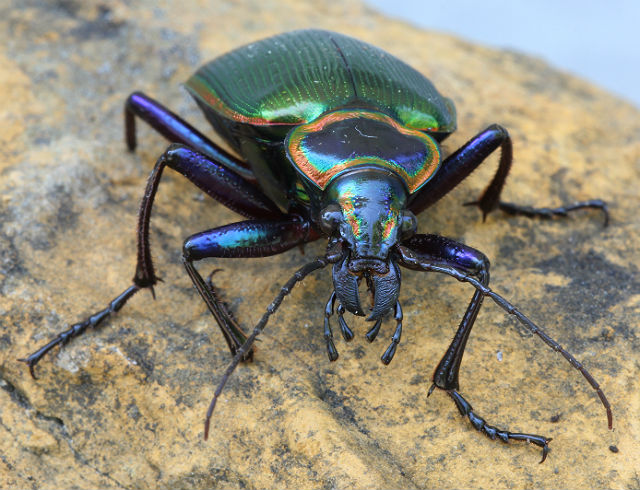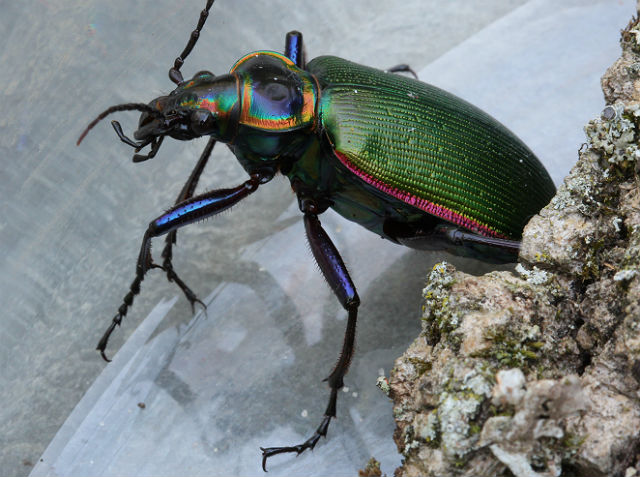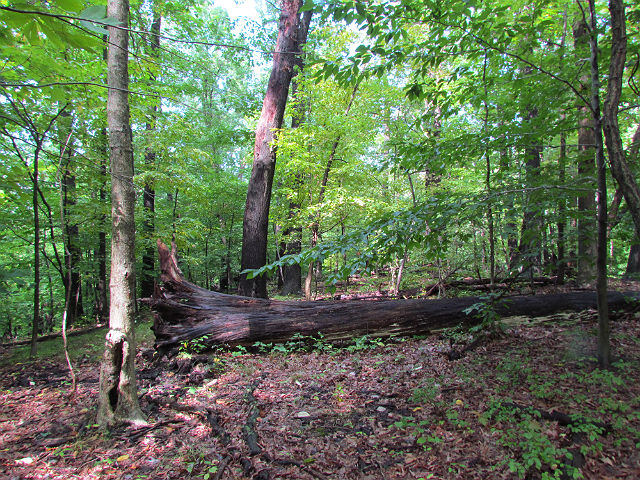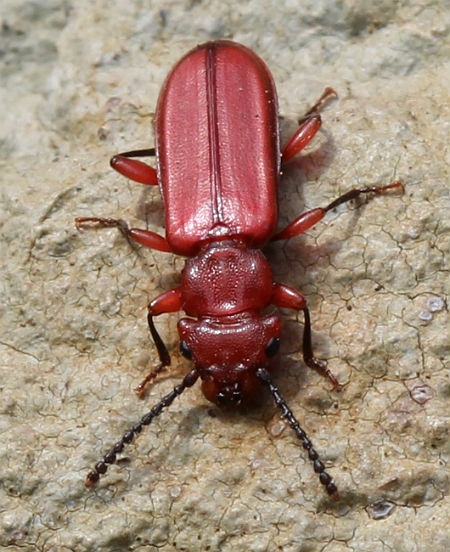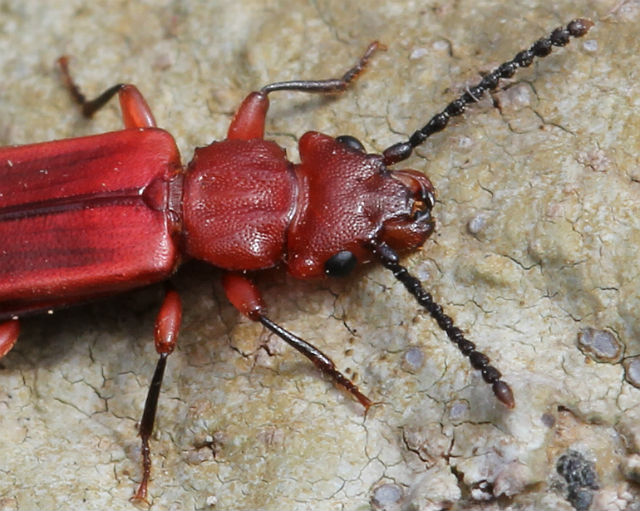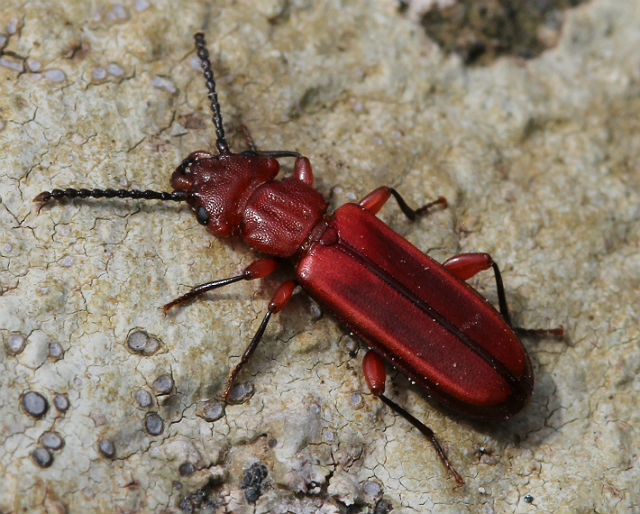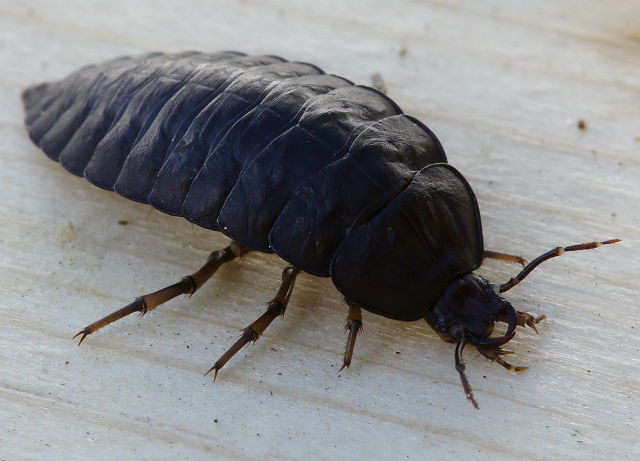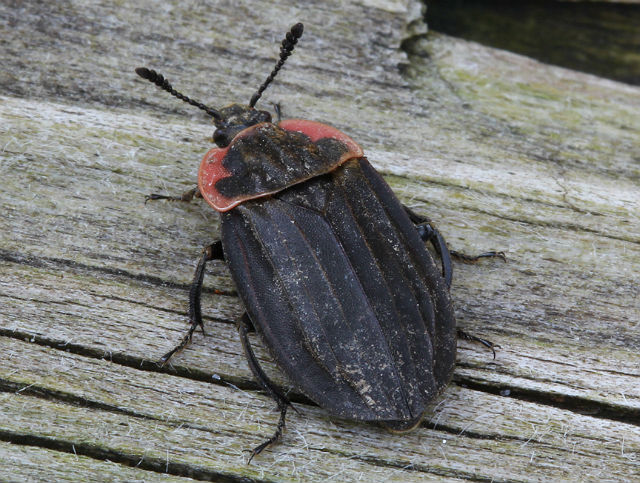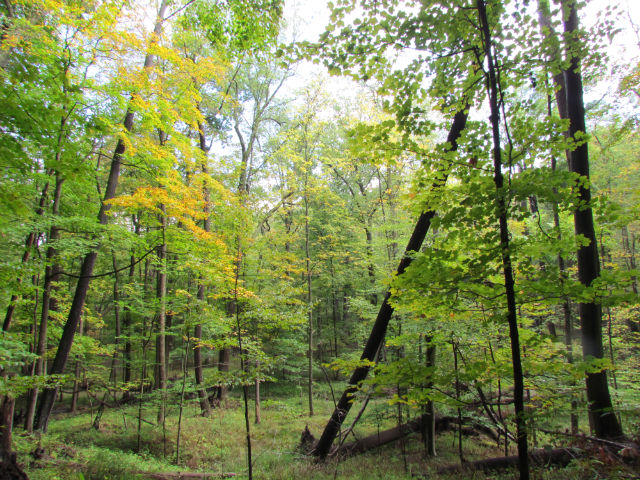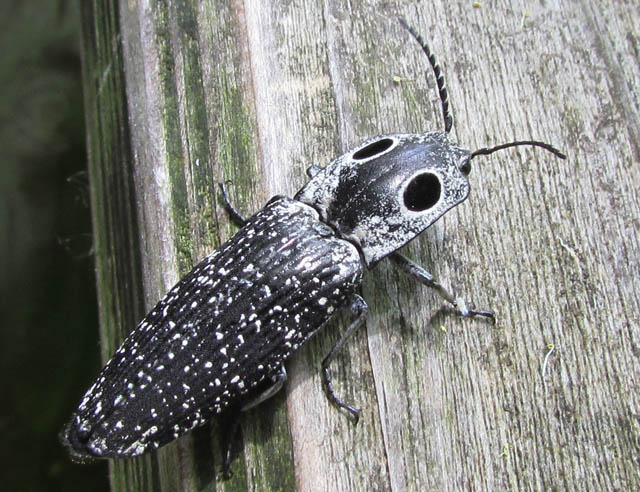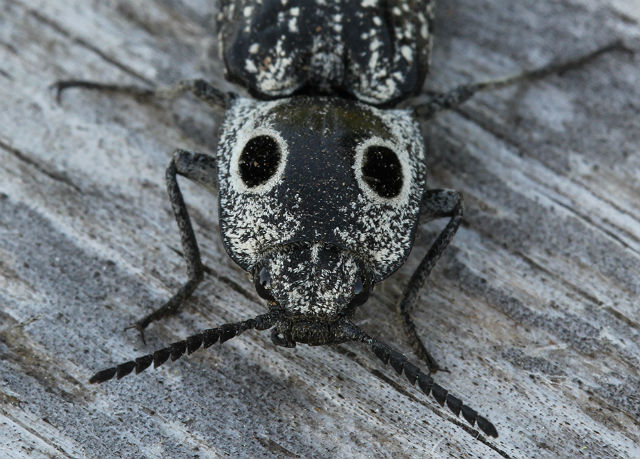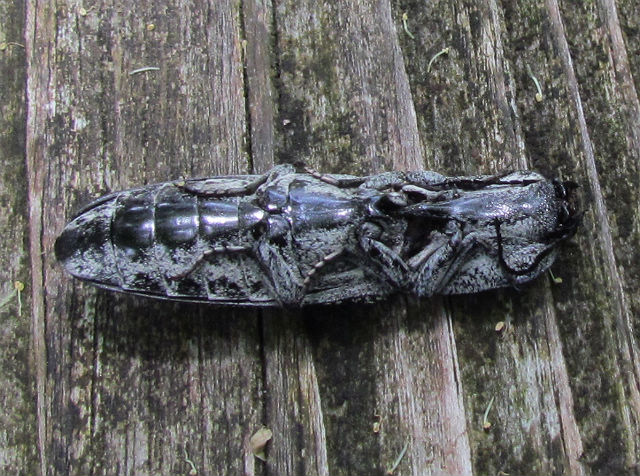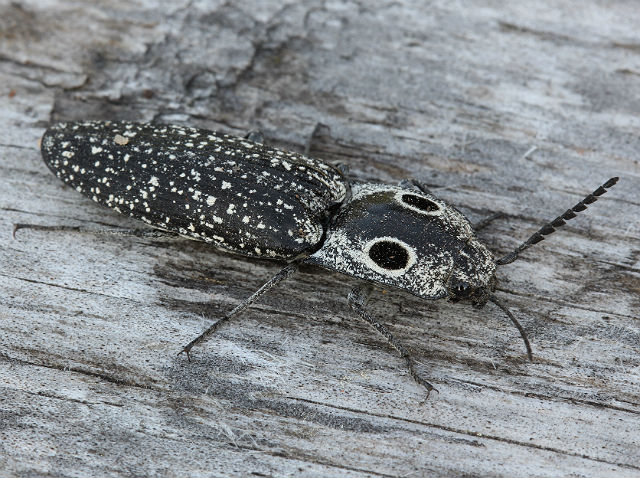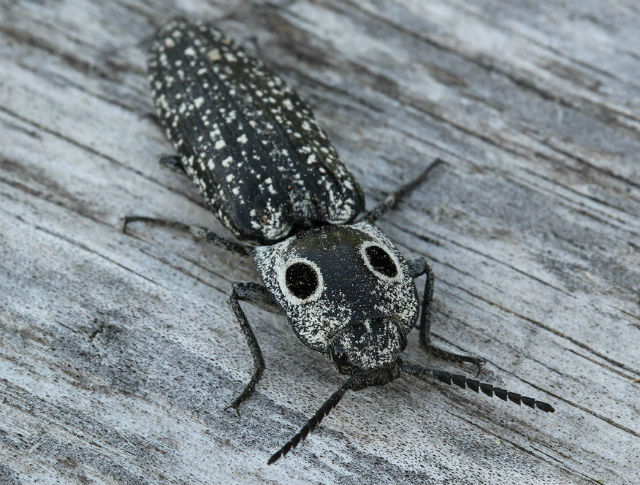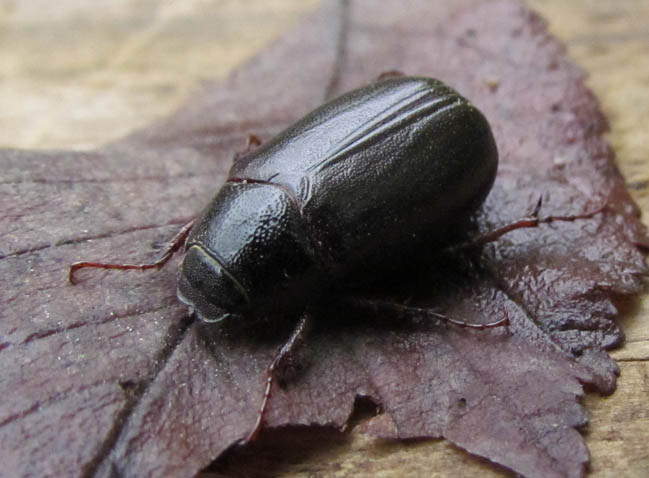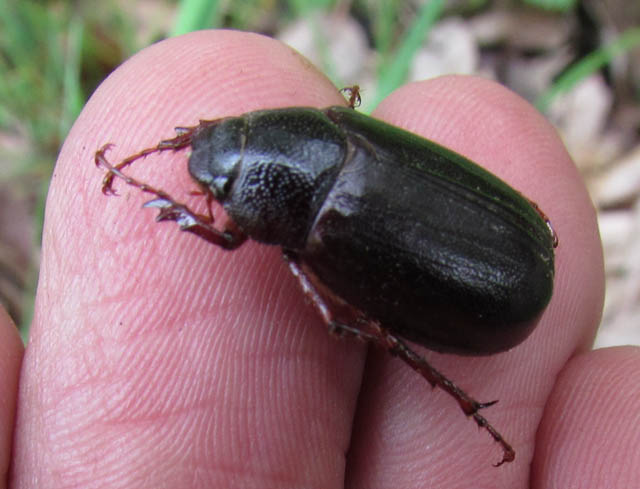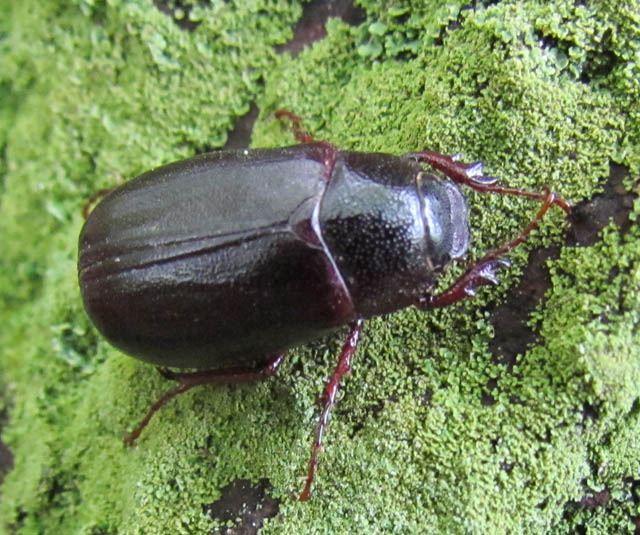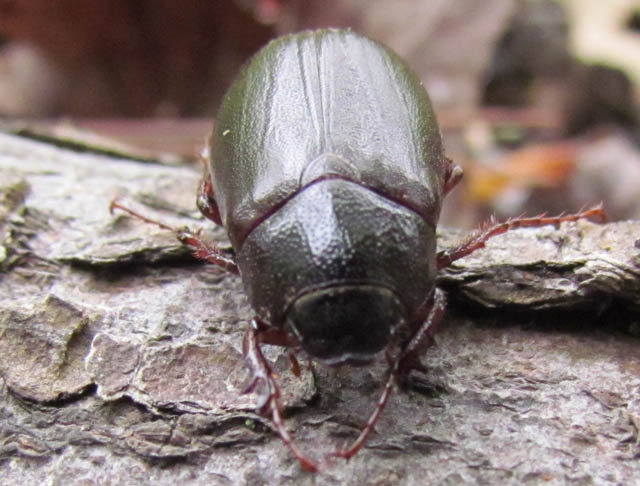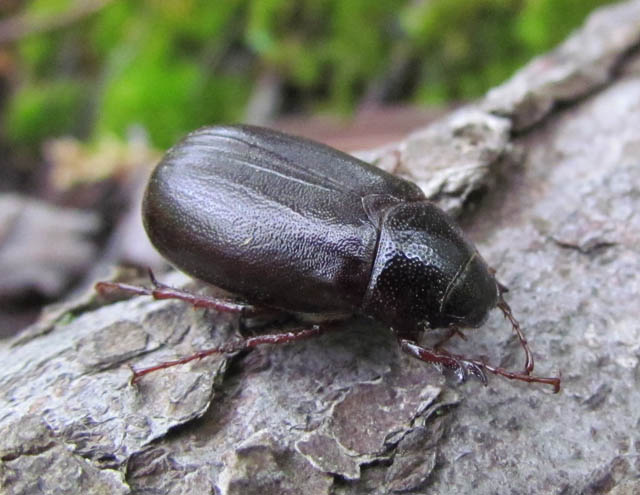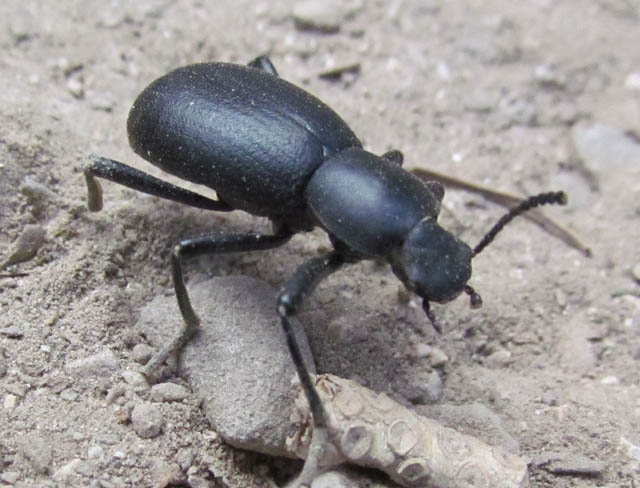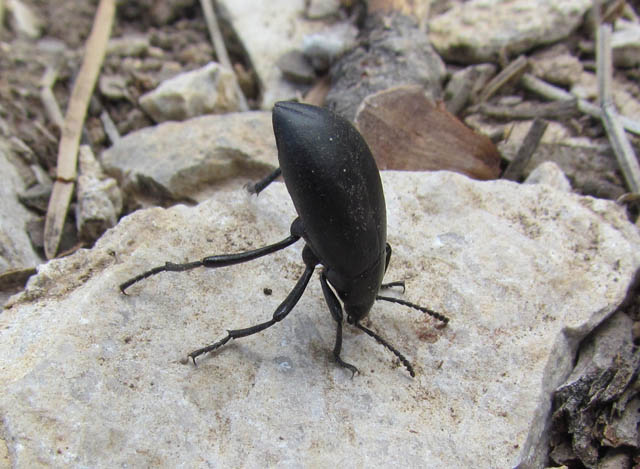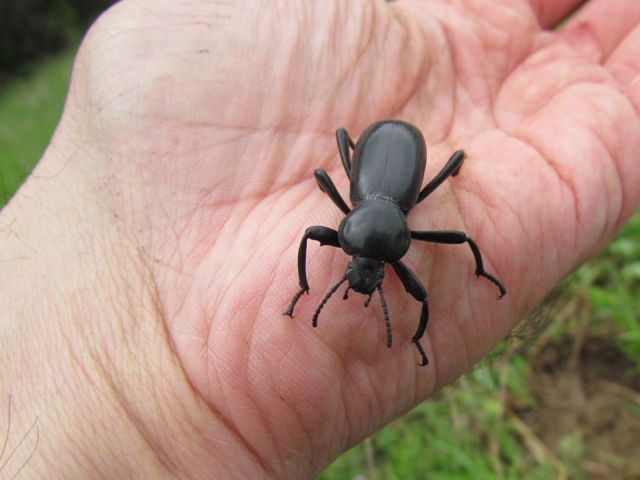There are a lot of species of beetles. Of those many species, there are over 30,000 species known as ground beetles in 1500 genera world wide. The Snail Eater falls into this group. I encountered this one while on a visit to northern California.
This creature can be found in a variety of habitats, including forests, parks and gardens. It is nocturnal and usually encountered under rocks, logs and the loose bark of downed trees – especially around old, rotting tree stumps and fallen branches.
The Snail-eating Ground Beetle feeds solely on snails and has a narrow head to enable it to better reach its prey.
It defends itself is by squirting yellow acid out of its rear end to startle predators attempting to mess with it. The Snail-eating Ground Beetle can also make a noise when picked up that some describe as a squeak, but others refer to as a metallic hiss.
Both larvae and adults are carnivorous and specialize in eating slugs and snails, as well as eating a range of carrion. They can be found throughout the year, although they hibernate during the coldest winter months.
This is just another example of one of the really cool beetles that can be found by doing a little bit of looking around.


